Abstract
This investigation focuses on the impact of multi-institutional arrangements on the role of governing boards in limiting or enhancing the managerial autonomy of individual hospitals. Data from a 1979 Special Survey by the American Hospital Association (N = 4213) are used to examine governing board-administrator relationships as a function of the degree of autonomy and scope of responsibility of the hospital governing board. It is hypothesized that governing boards responsible for multiple hospitals or for multiple nonhospital organizations and those boards accountable to a higher organizational authority will exercise more formal control over hospital chief executive officers (CEOs) than will boards of single or autonomous hospitals. The analysis assumes that formal control by the governing board over the management function of the individual hospital is exercised partly through soliciting or limiting participation by hospital administrators in key policy decisions and through the evaluation of administrative performance. Therefore, it is anticipated that hospitals governed by boards with multiple responsibilities as well as hospitals governed by boards accountable to a higher authority will be (1) less likely to have CEOs who are members of the governing board executive committee, (2) more likely to have annual performance reviews of the CEO by the governing board, and (3) more likely to have such reviews conducted according to preestablished criteria. Study results provide general support for the hypotheses with respect to hospital boards with multiple responsibilities: the data suggest that such boards do exercise greater control over hospital administrators and these effects do appear to be stronger for hospitals in the private sector. Hospitals governed by boards accountable to a higher authority, however, are more likely to have CEOs who are members of the governing board executive committee--a pattern in direct opposition to that hypothesized. Furthermore, these boards are no more likely to conduct annual CEO performance reviews than are boards with more autonomy. Boards accountable to higher authorities are more likely, however, to use preestablished criteria when such reviews are conducted. This general pattern is similar whether hospital boards are accountable to religious authorities, to investor-owned corporate boards, or to the boards of not-for-profit multi-institutional systems. A different pattern emerges, however, for boards accountable to a state, county, or local government authority.(ABSTRACT TRUNCATED AT 400 WORDS)
Full text
PDF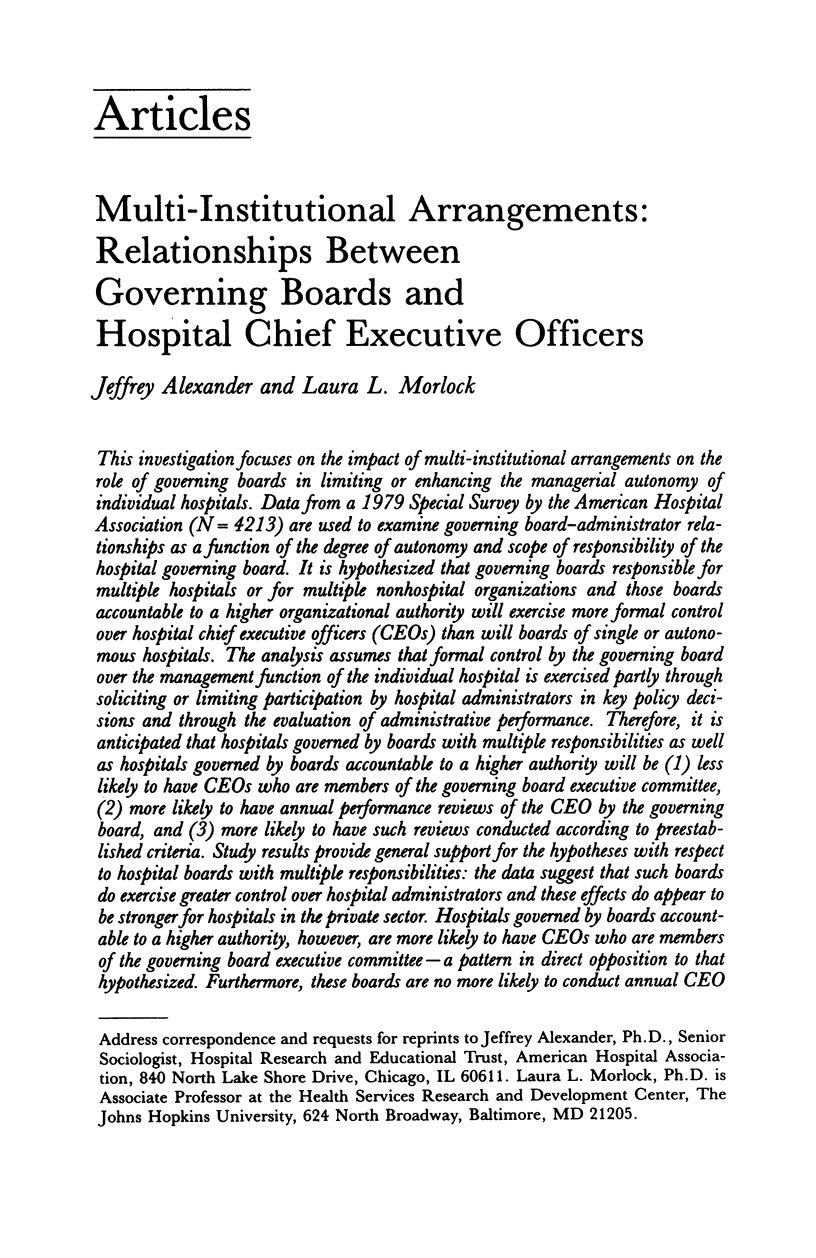
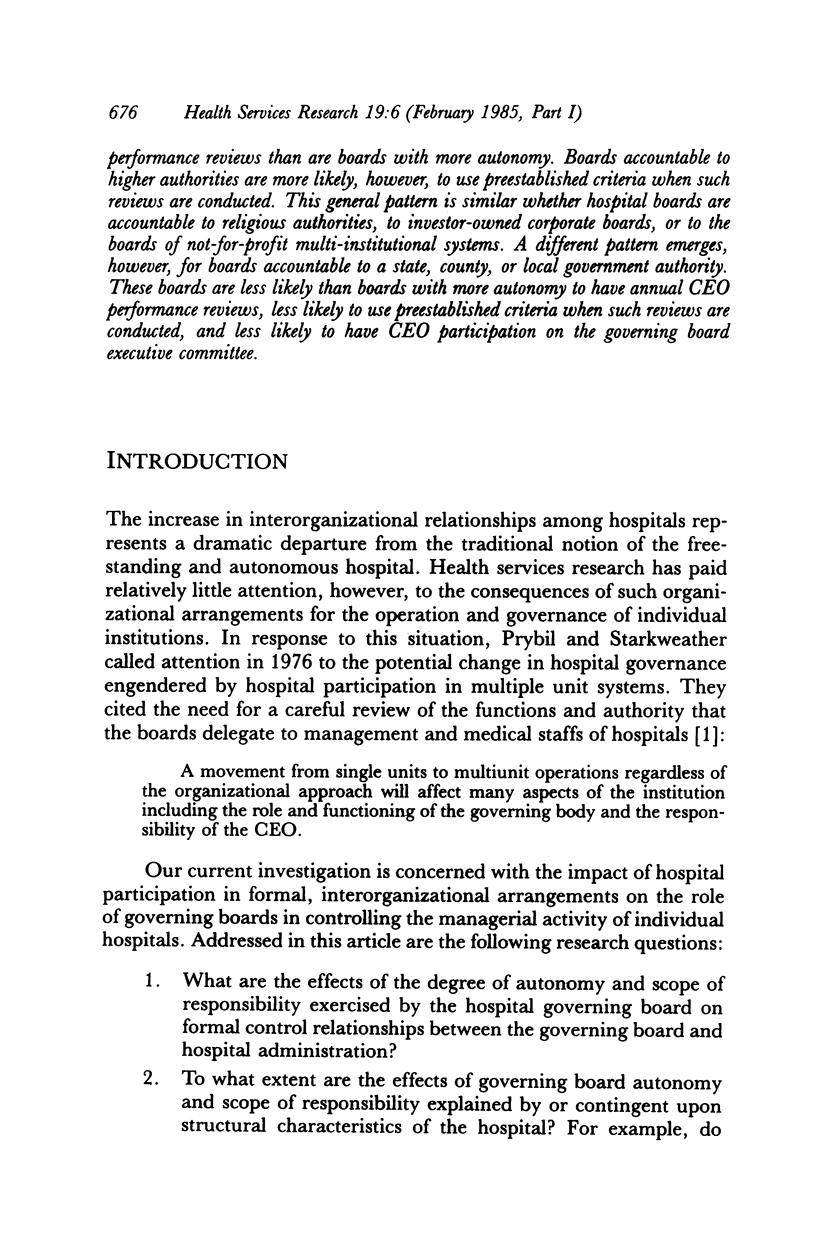
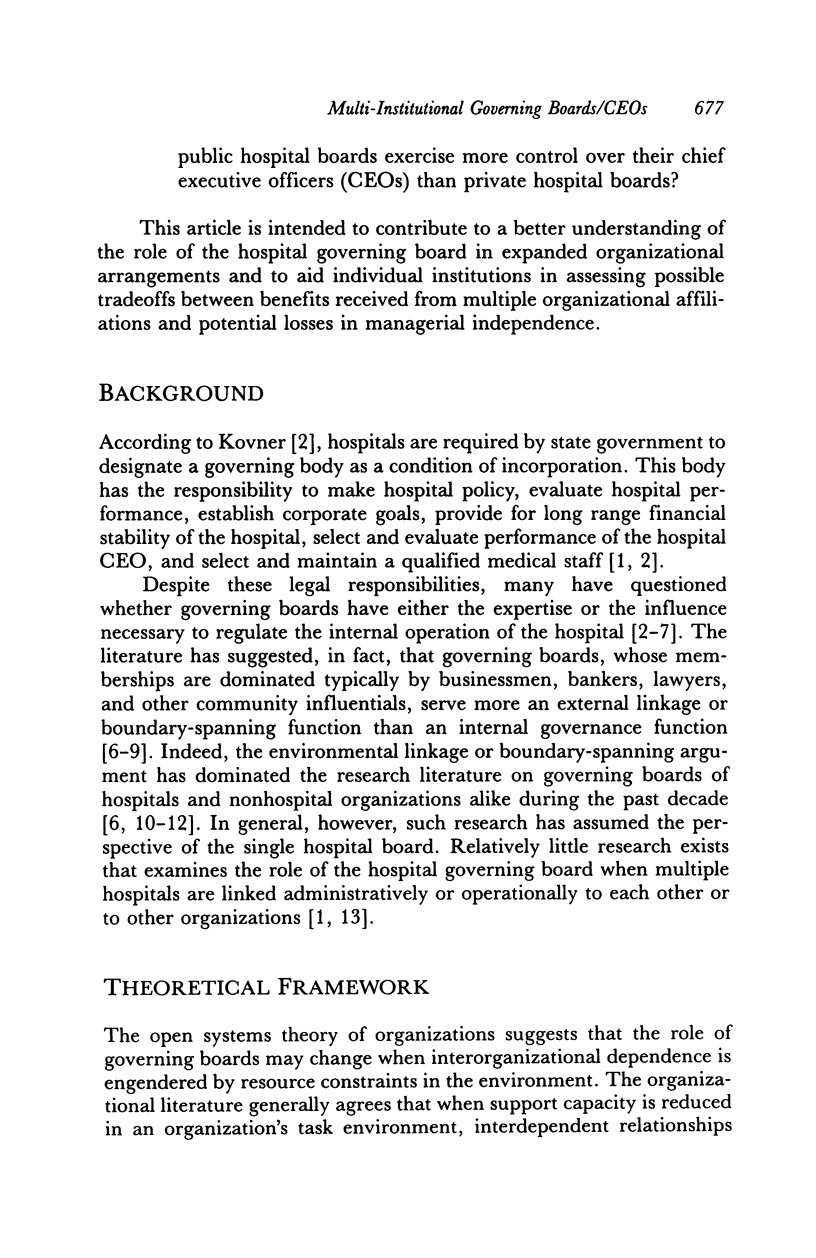

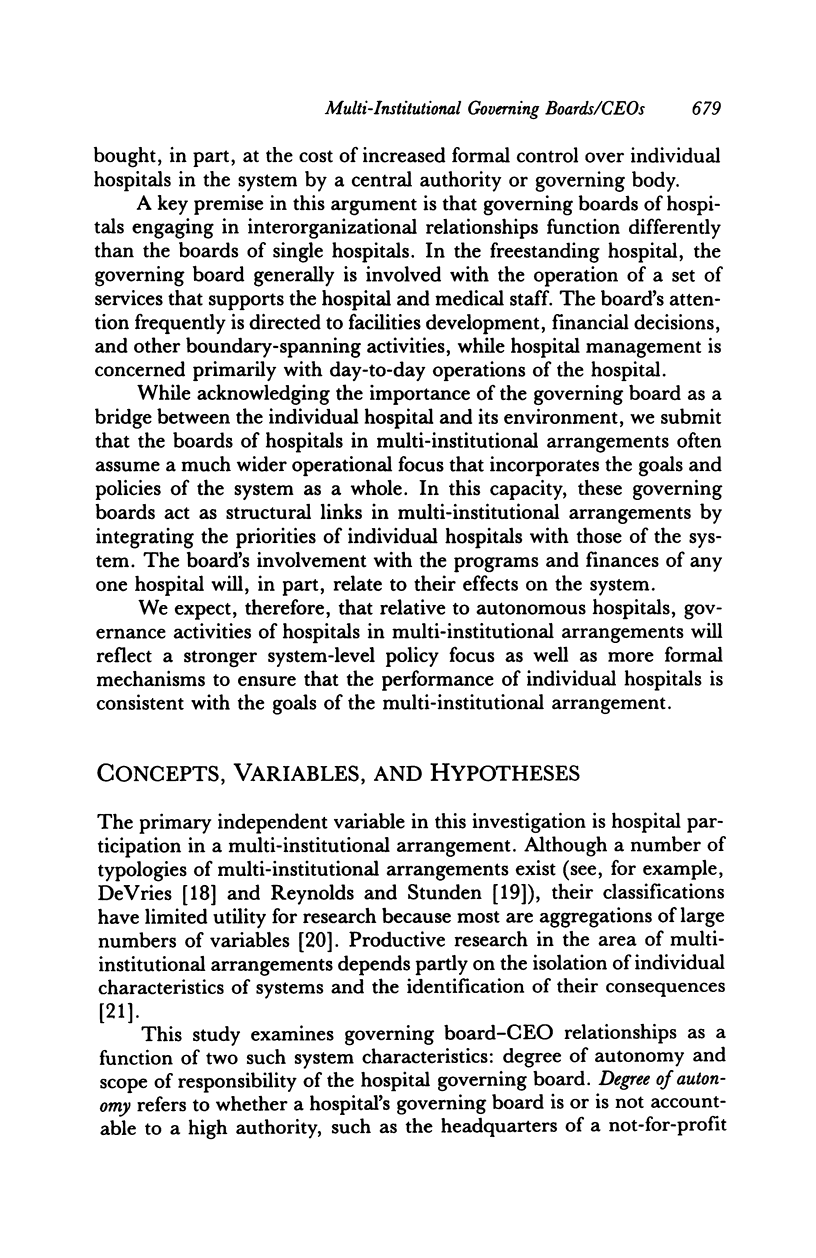
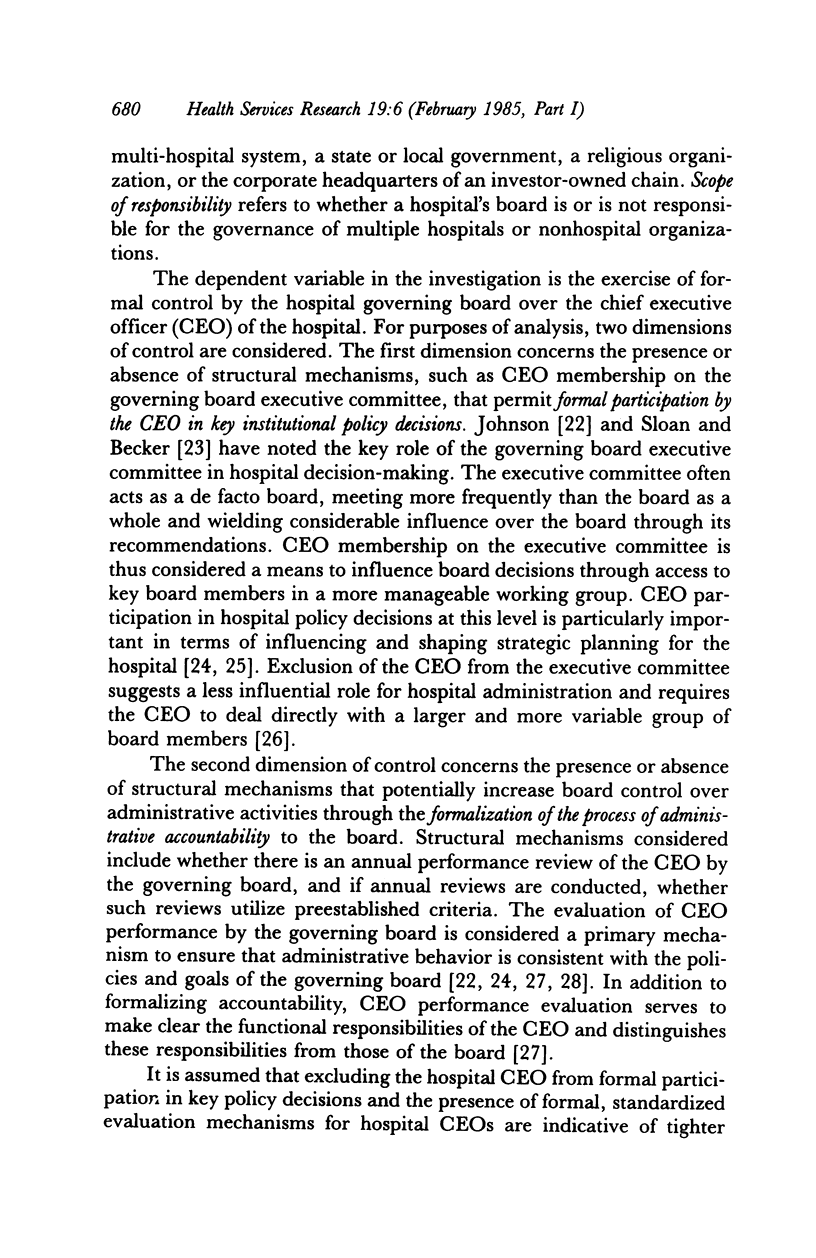
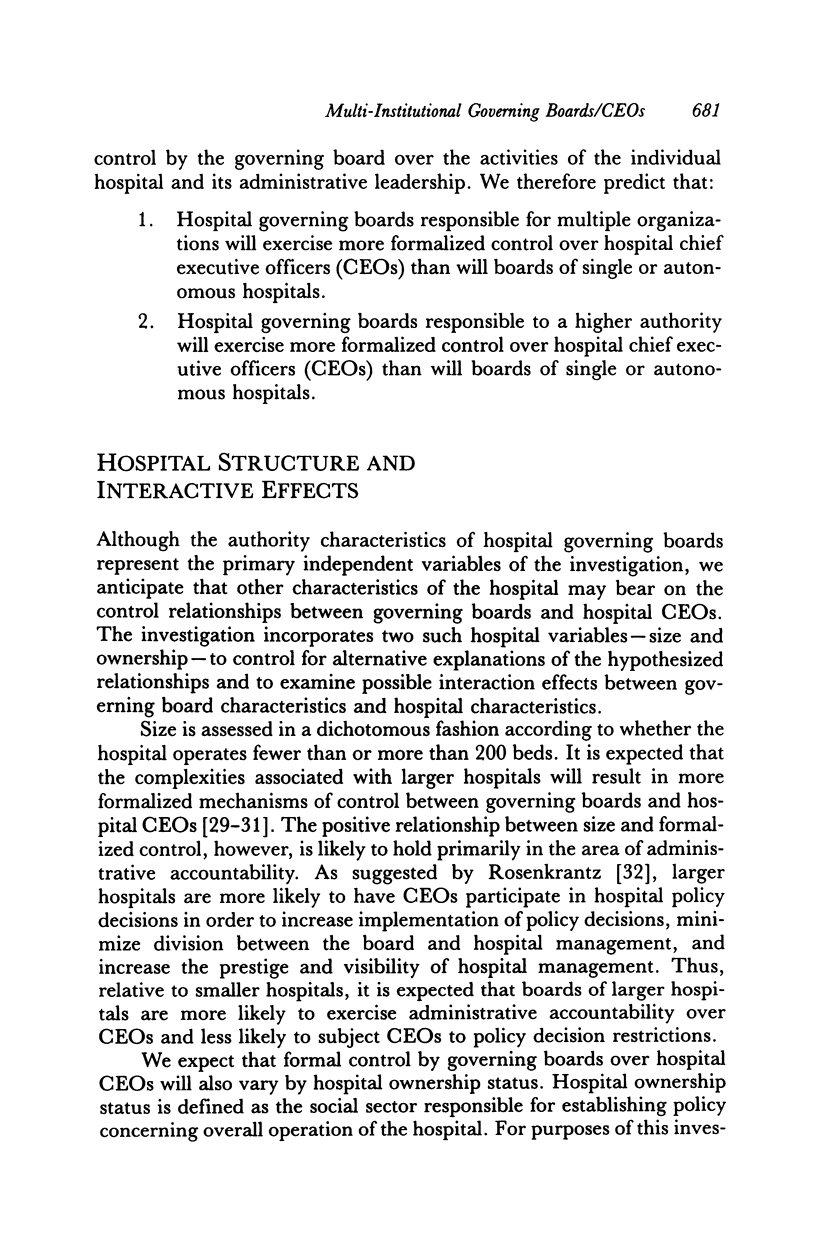
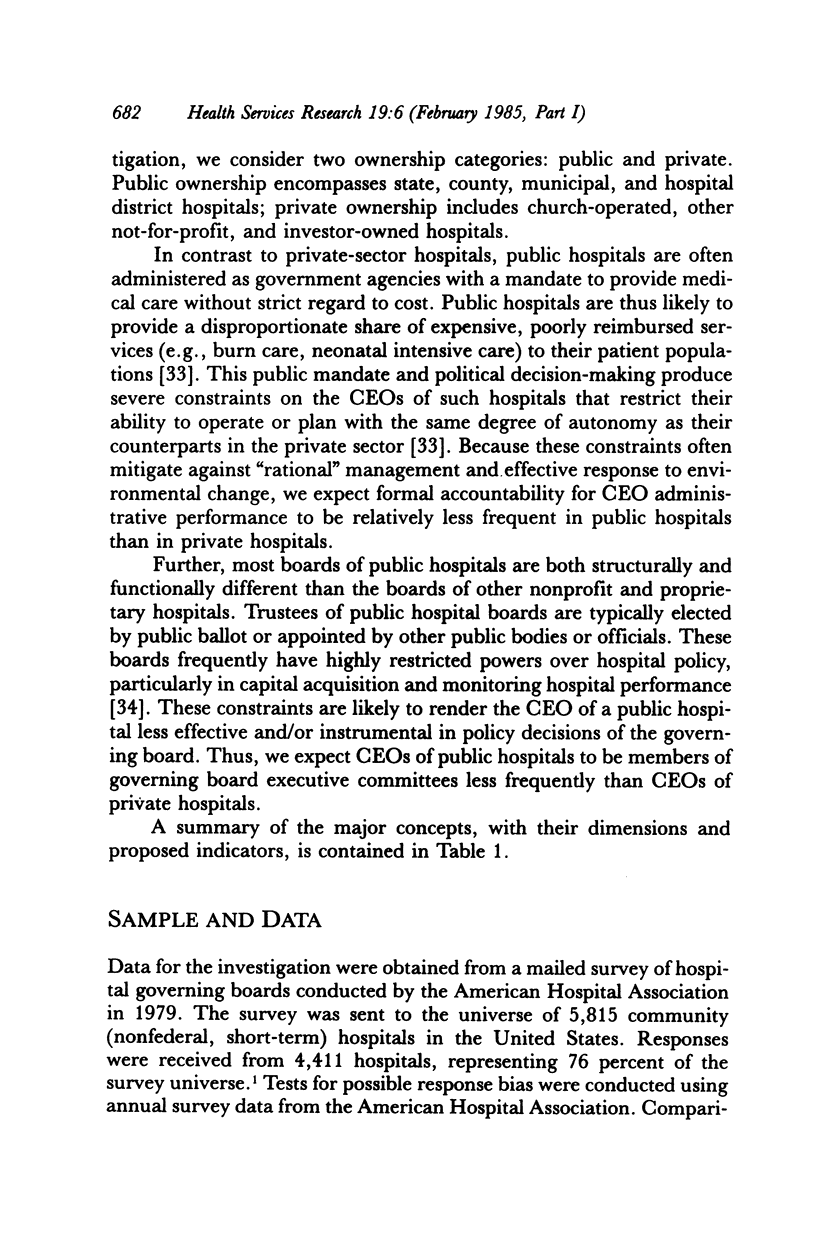
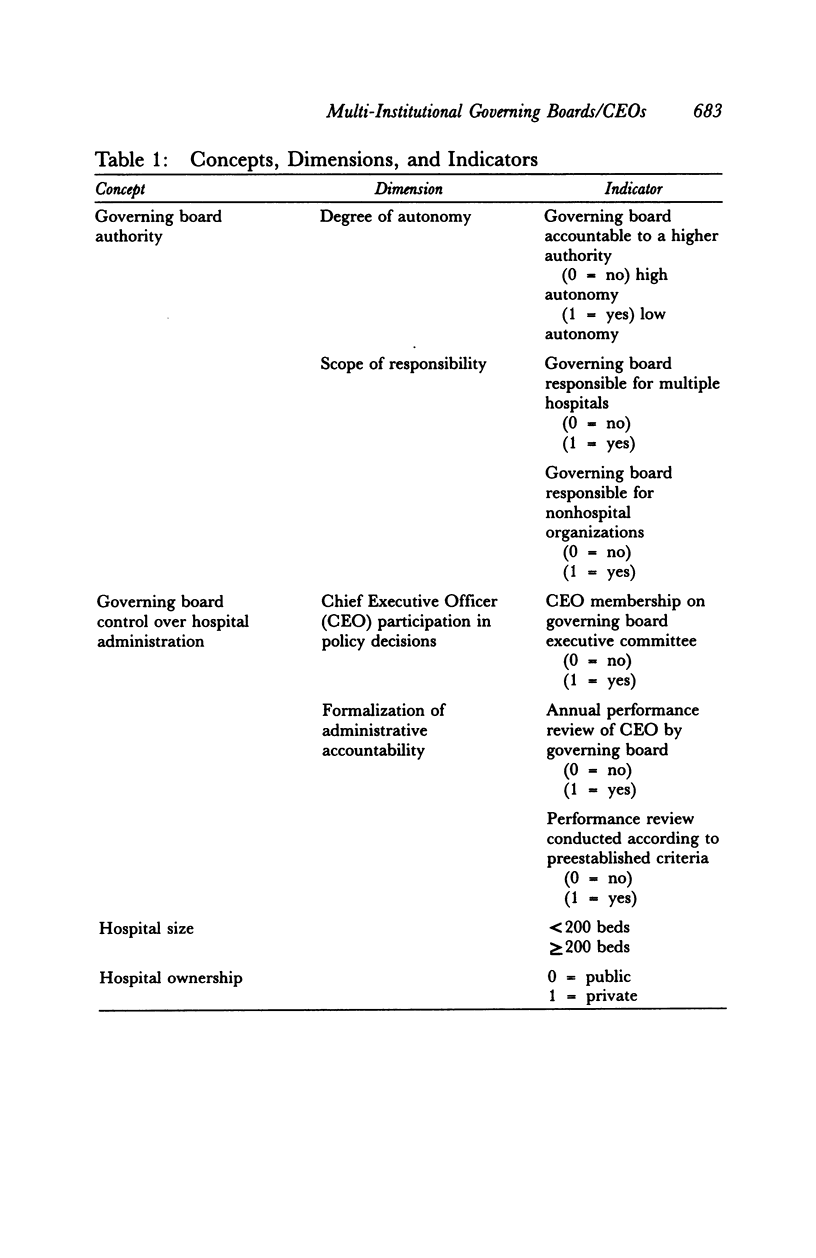
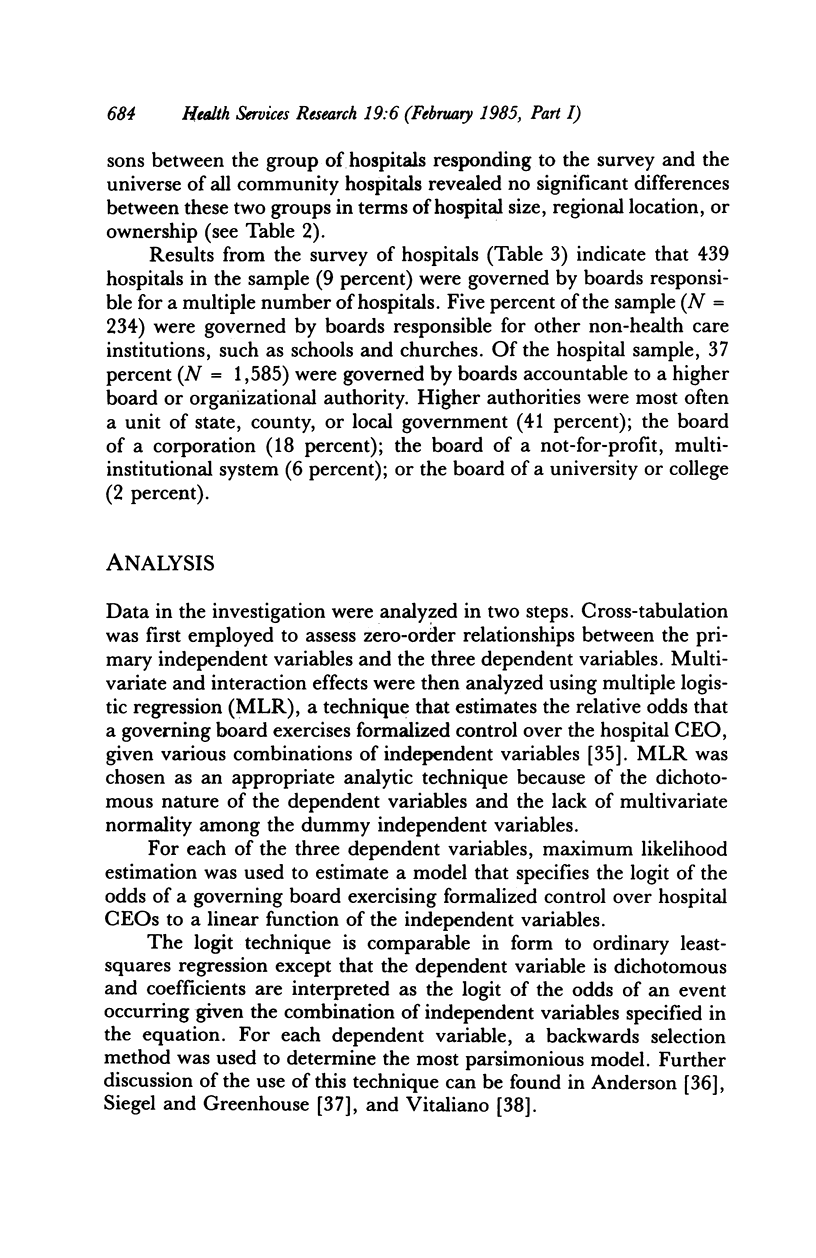

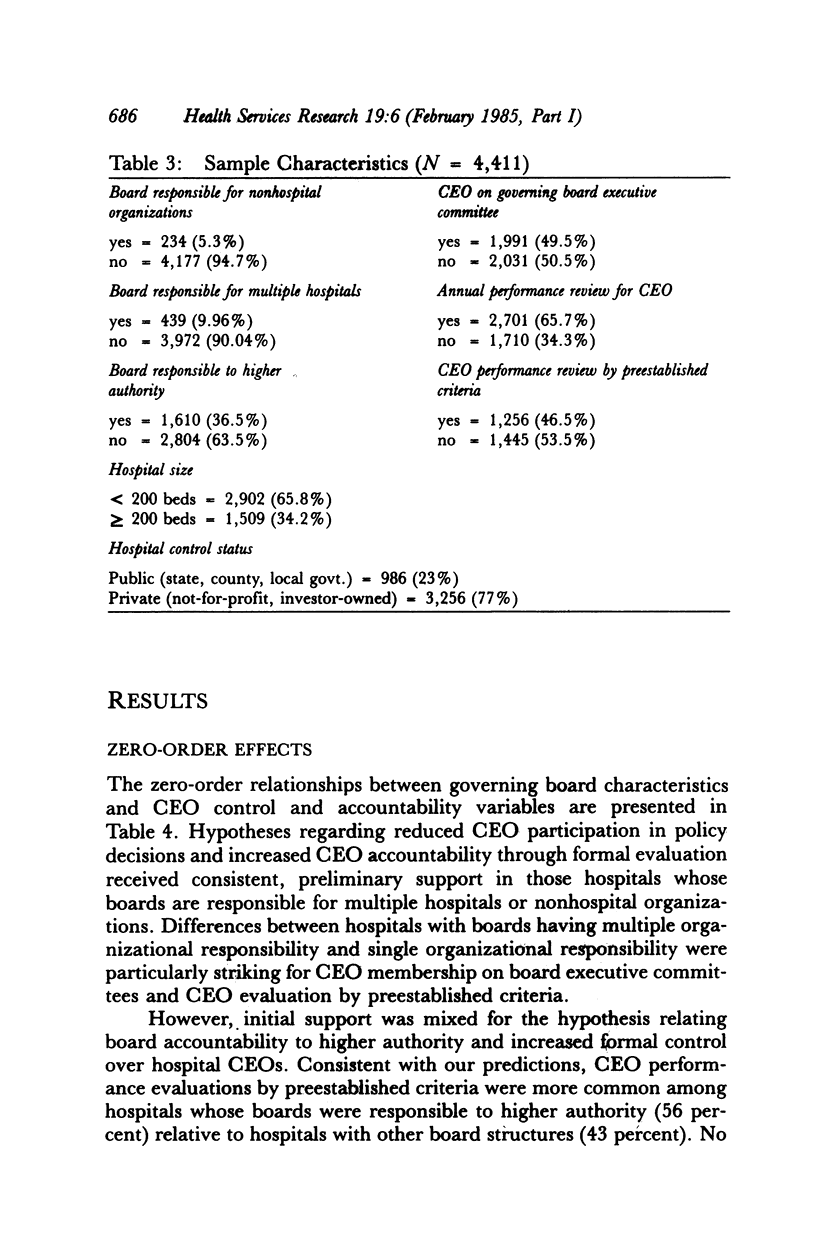
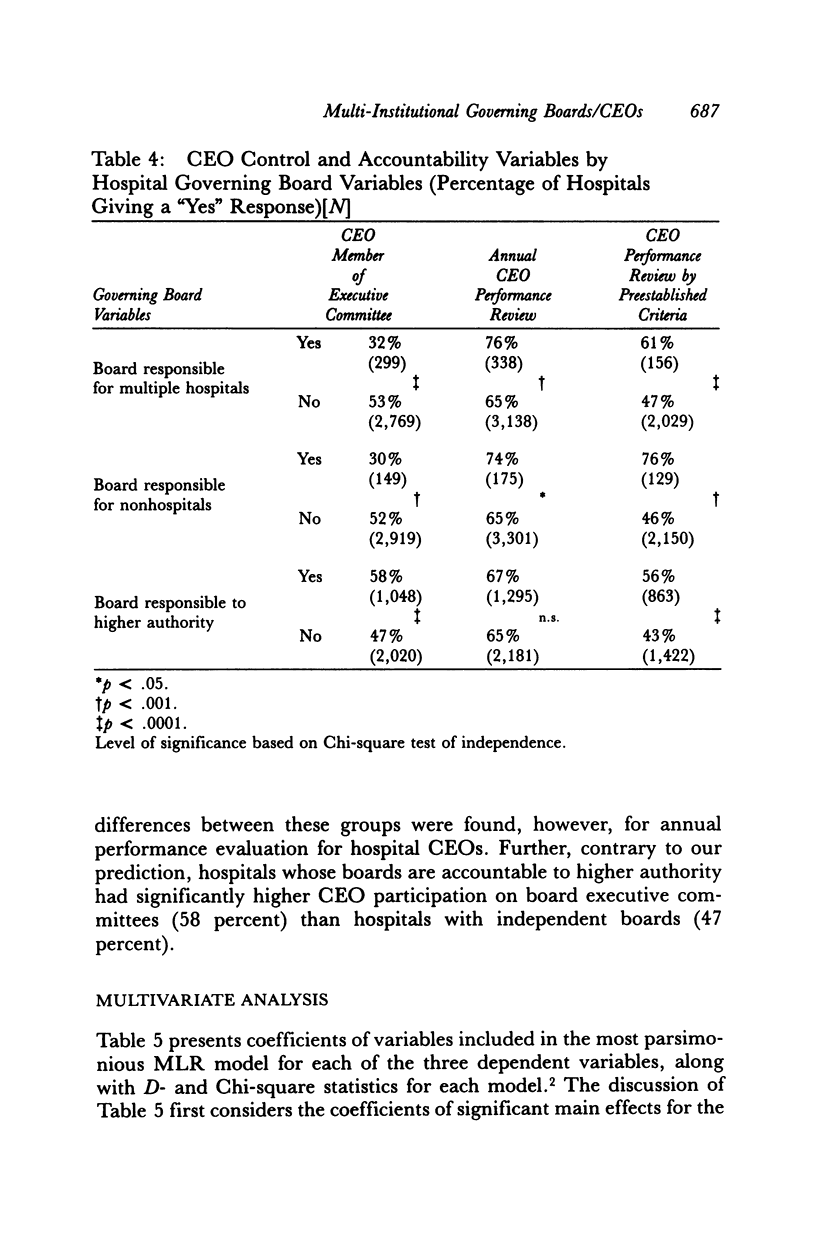

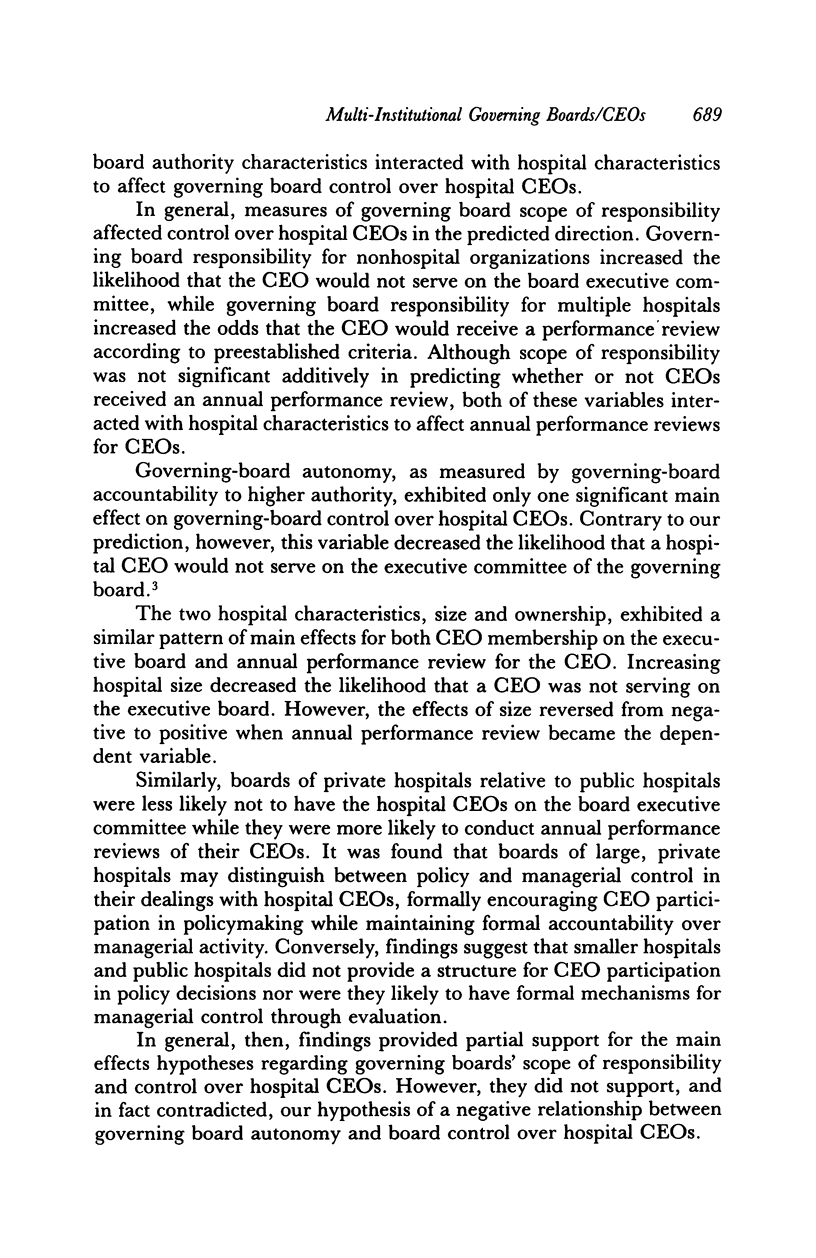
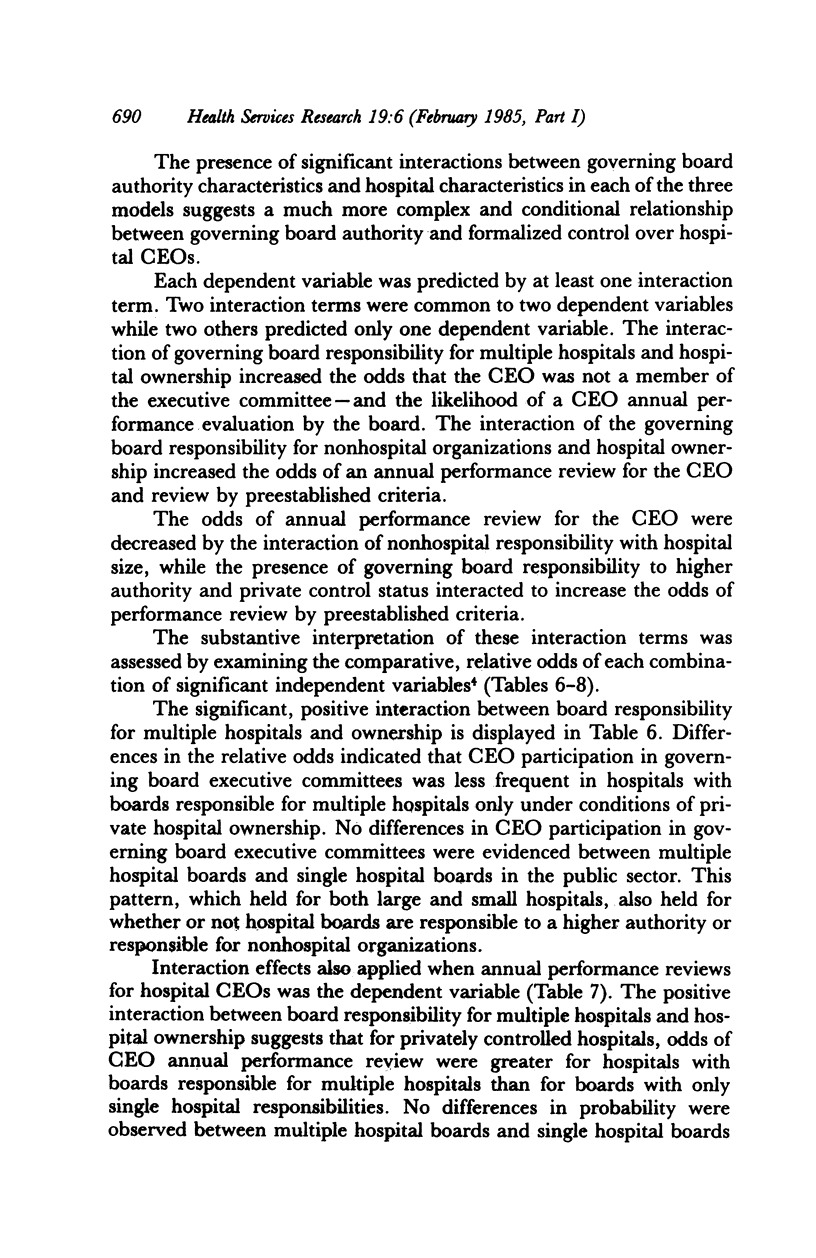
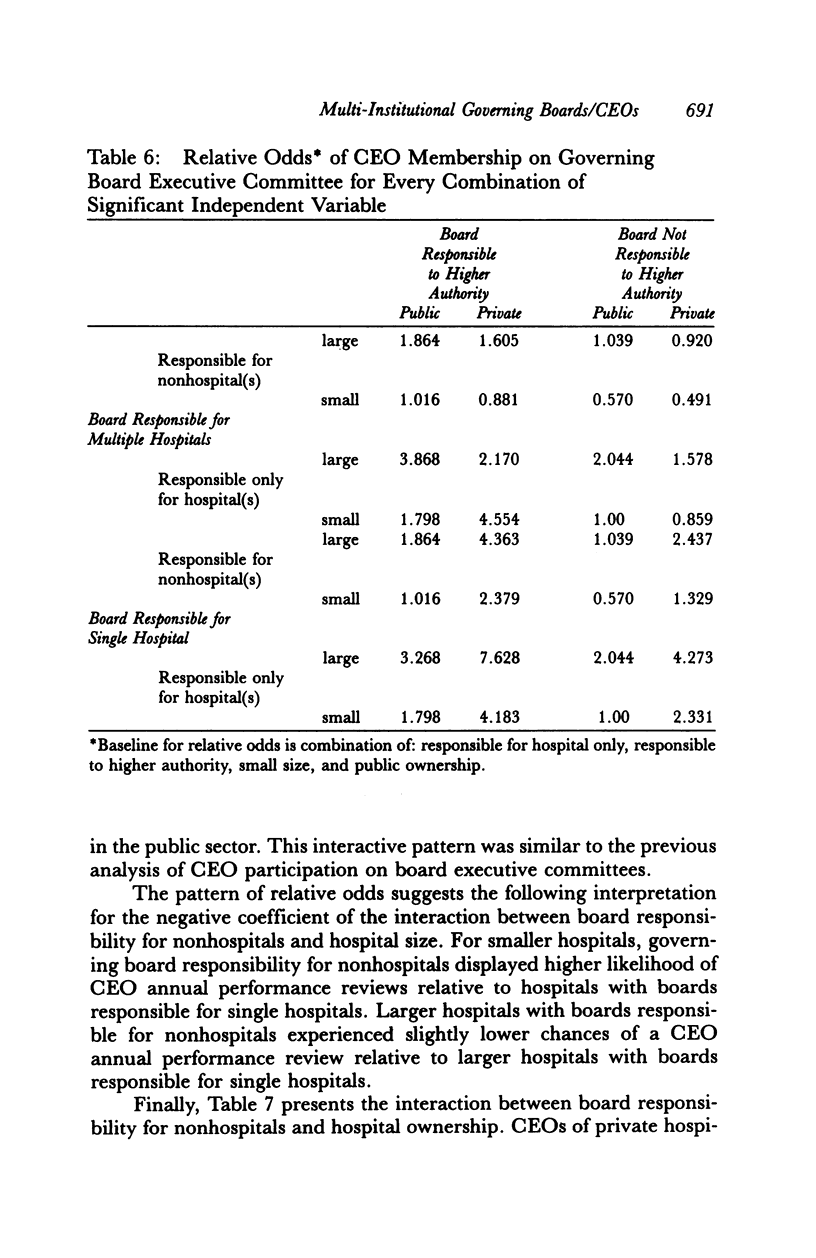
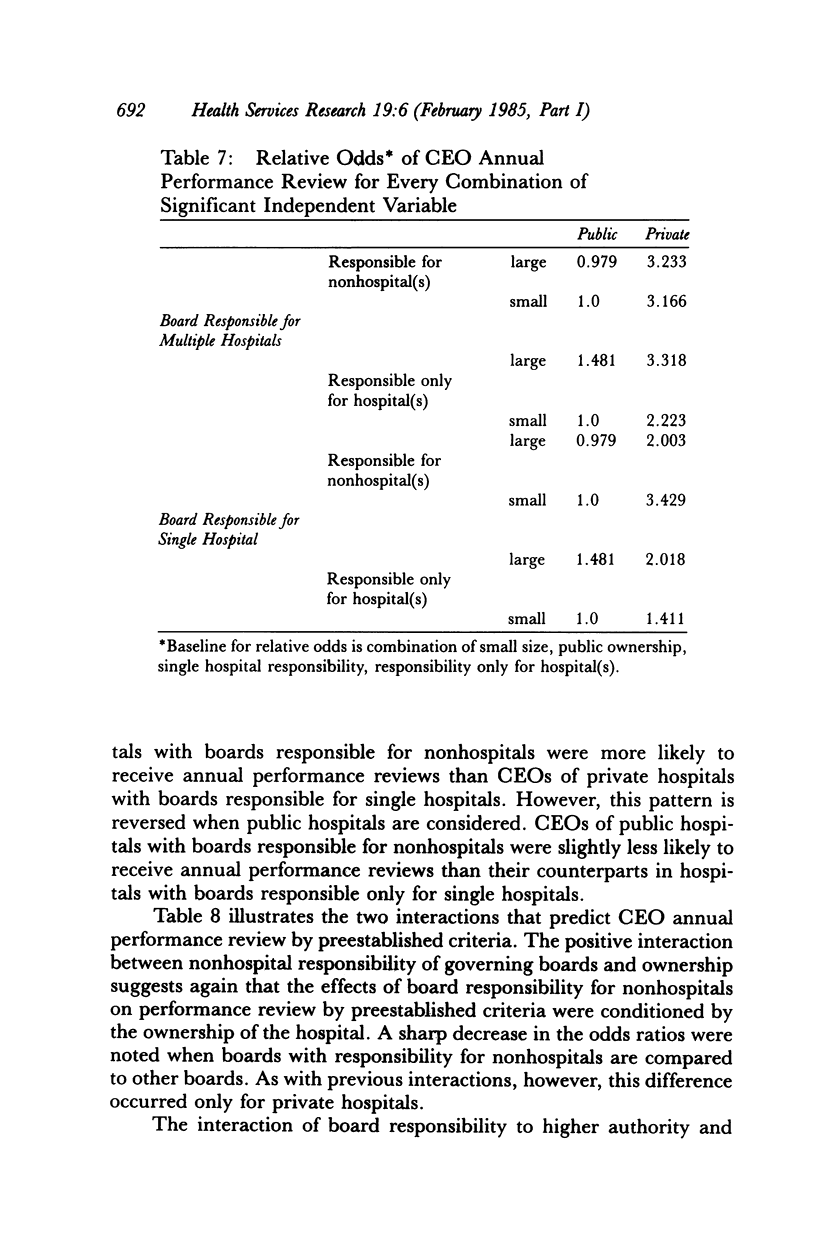
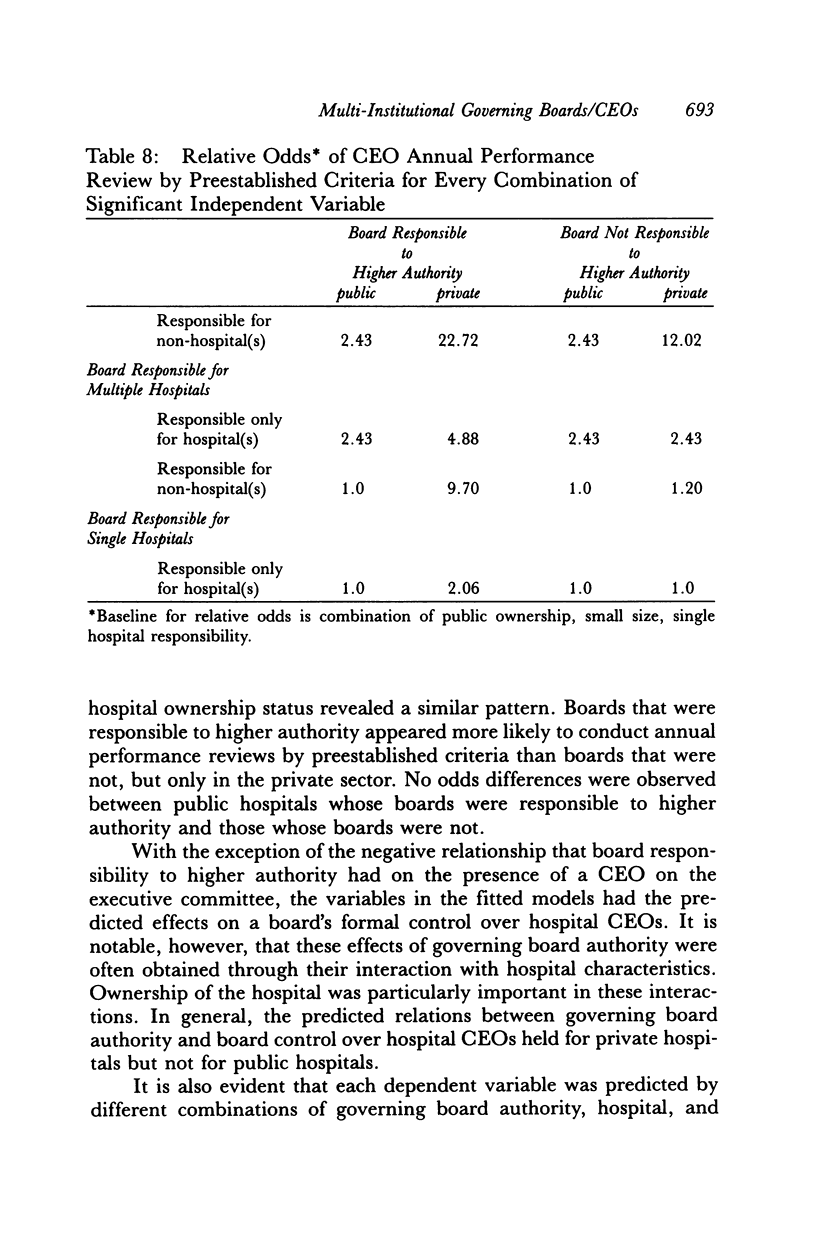
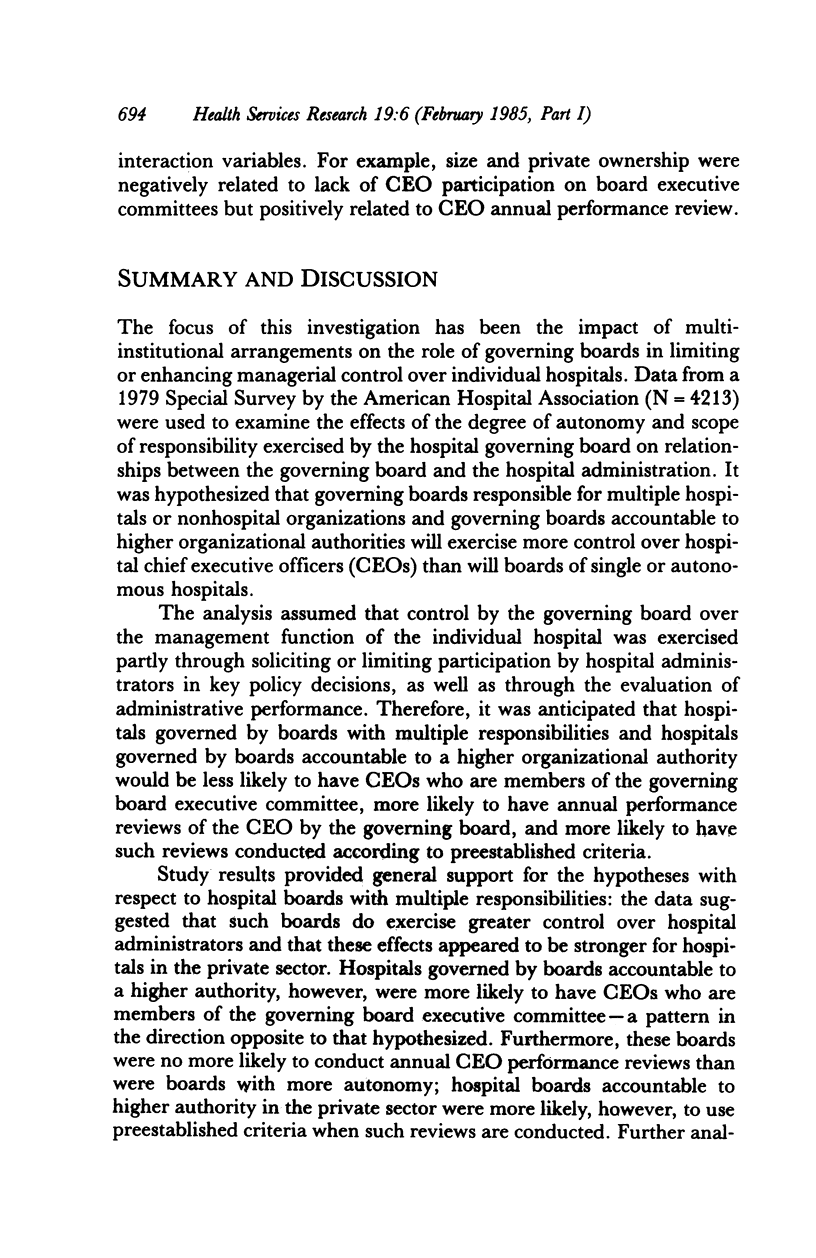
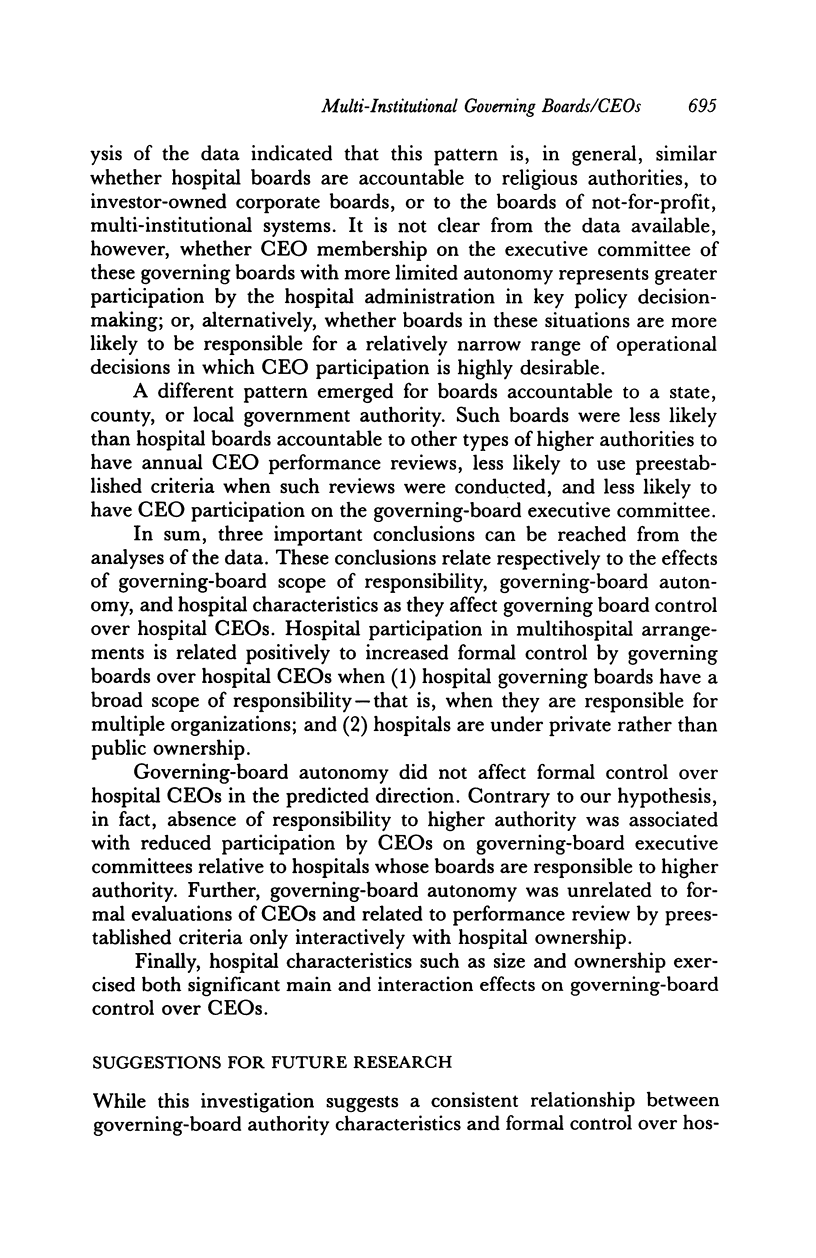
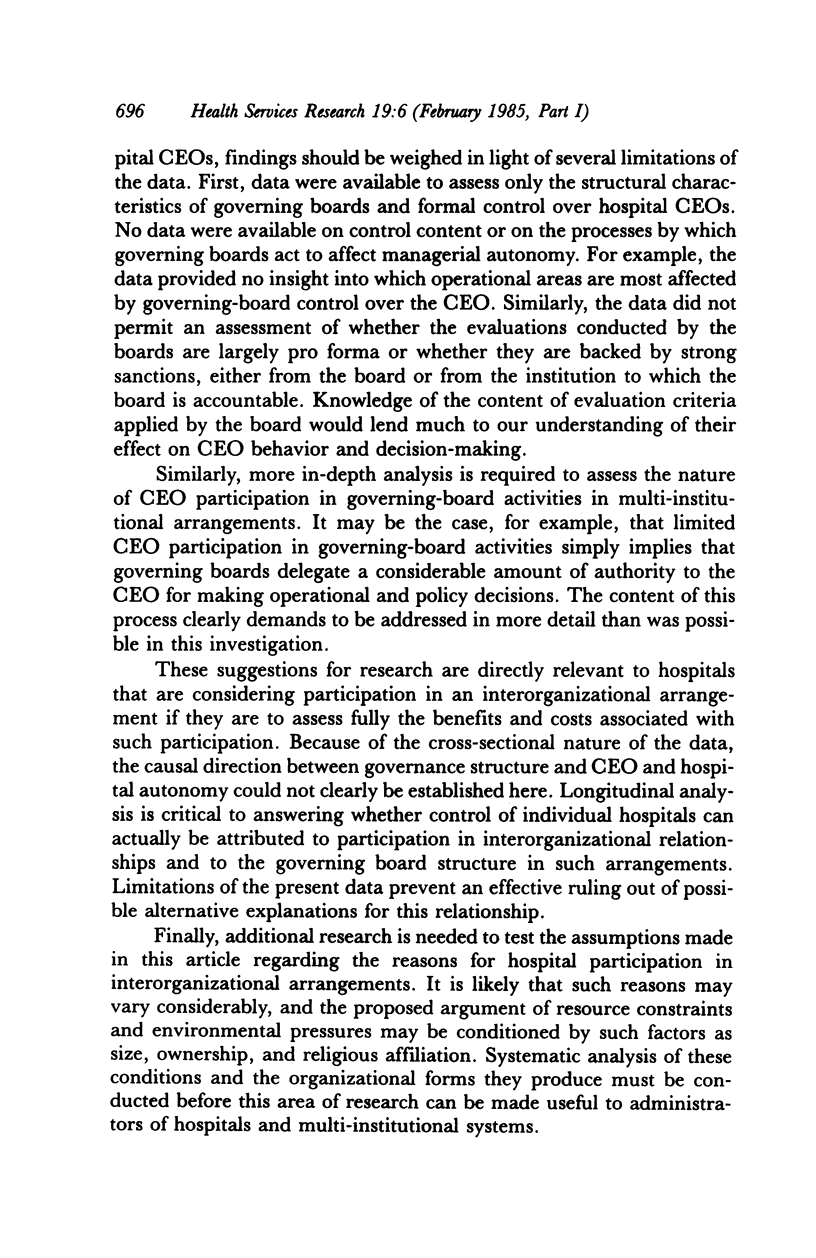
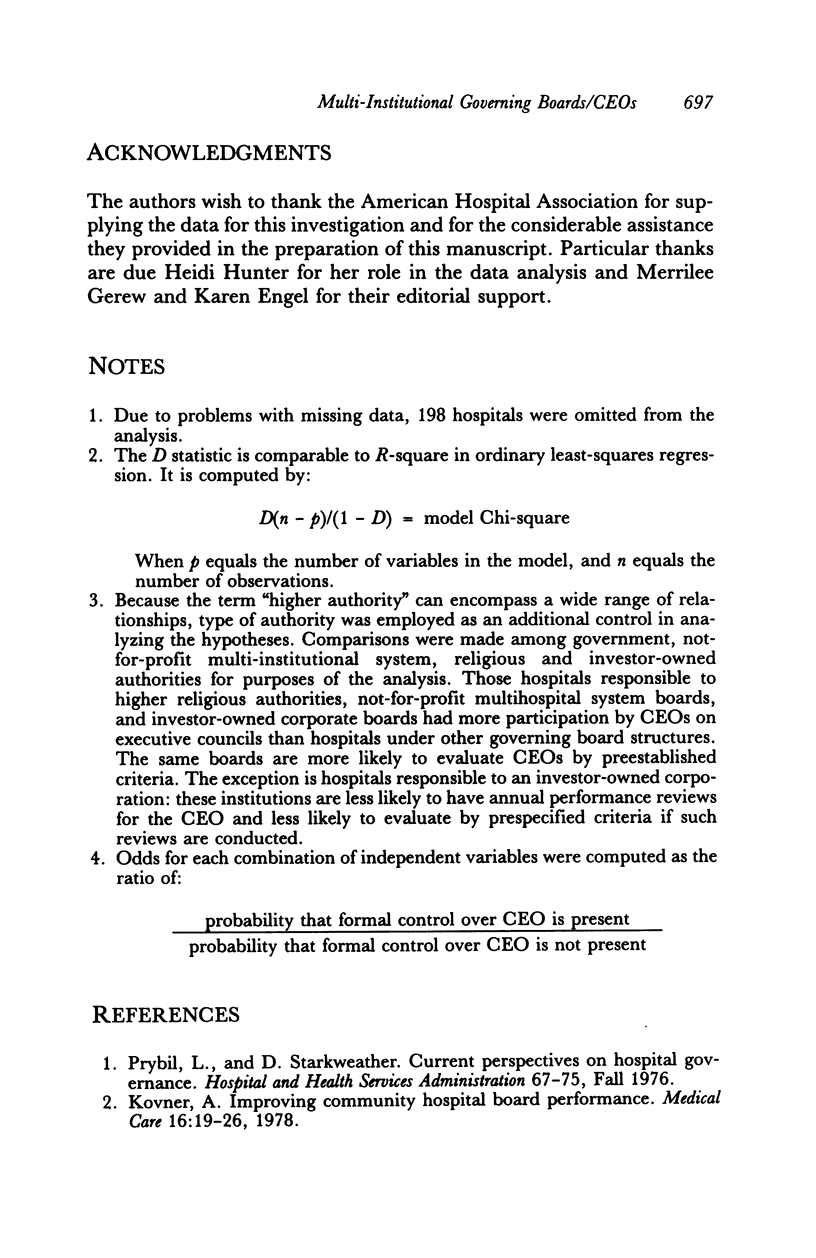
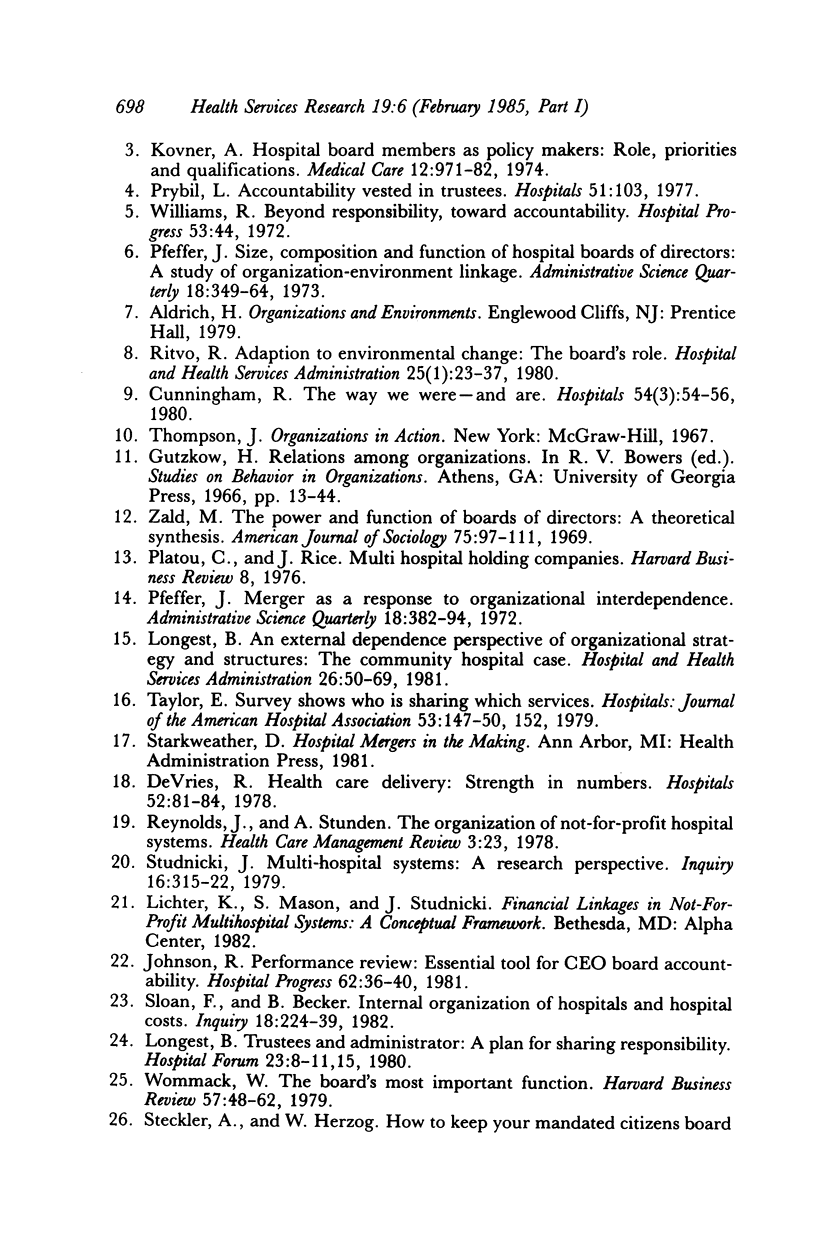

Selected References
These references are in PubMed. This may not be the complete list of references from this article.
- Brown E. R. Public hospitals on the brink: their problems and their options. J Health Polit Policy Law. 1983 Winter;7(4):927–944. doi: 10.1215/03616878-7-4-927. [DOI] [PubMed] [Google Scholar]
- Cunningham R. M., Jr The way we were--and are. Hospitals. 1980 Feb 1;54(3):54–56. [PubMed] [Google Scholar]
- DeVries R. A. Health care delivery: strength in numbers. Hospitals. 1978 Mar 16;52(6):81–84. [PubMed] [Google Scholar]
- Johnson R. L. Boards are remodeled as hospitals merge. Hospitals. 1980 May 1;54(9):101-2, 104-5. [PubMed] [Google Scholar]
- Johnson R. L. Performance review: essential tool for CEO, board accountability. Hosp Prog. 1981 Dec;62(12):36–40. [PubMed] [Google Scholar]
- Johnson R. L. Performance review: essential tool for CEO, board accountability. Hosp Prog. 1981 Dec;62(12):36–40. [PubMed] [Google Scholar]
- Koontz H. Holding the CEO accountable. Hosp Prog. 1976 Sep;57(9):68–74. [PubMed] [Google Scholar]
- Kovner A. R. Hospital board members as policy-makers: role, priorities, and qualifications. Med Care. 1974 Dec;12(12):971–982. doi: 10.1097/00005650-197412000-00001. [DOI] [PubMed] [Google Scholar]
- Longest B. B., Jr An external dependence perspective of organizational strategy and structure: the community hospital case. Hosp Health Serv Adm. 1981 Spring;26(2):50–69. [PubMed] [Google Scholar]
- Longest B. B., Jr Trustees & administrator: a plan for sharing responsibility. Hosp Forum. 1980 Apr-May;23(3):8-11, 15. [PubMed] [Google Scholar]
- Prybil L. D. Hospital boards face increasing demands. Hospitals. 1977 Apr 1;51(7):103–106. [PubMed] [Google Scholar]
- Prybil L. D. Hospital boards face increasing demands. Hospitals. 1977 Apr 1;51(7):103–106. [PubMed] [Google Scholar]
- Ritvo R. A. Adaptation to environmental change: the board's role. Hosp Health Serv Adm. 1980 Winter;25(1):23–37. [PubMed] [Google Scholar]
- Seigel D. G., Greenhouse S. W. Multiple relative risk functions in case-control studies. Am J Epidemiol. 1973 May;97(5):324–331. doi: 10.1093/oxfordjournals.aje.a121512. [DOI] [PubMed] [Google Scholar]
- Sloan F. A., Becker E. R. Internal organization of hospitals and hospital costs. Inquiry. 1981 Fall;18(3):224–239. [PubMed] [Google Scholar]
- Studnicki J. Multihospital systems: a research perspective. Inquiry. 1979 Winter;16(4):315–322. [PubMed] [Google Scholar]
- Taylor E. Survey shows who is sharing which services. Hospitals. 1979 Sep 16;53(18):147-50, 152. [PubMed] [Google Scholar]
- Vitaliano P. P. The use of logistic regression for modelling risk factors: with application to non-melanoma skin cancer. Am J Epidemiol. 1978 Nov;108(5):402–414. doi: 10.1093/oxfordjournals.aje.a112638. [DOI] [PubMed] [Google Scholar]
- Williams K. J. Beyond responsibility: toward accountability. Hosp Prog. 1972 Jan;53(1):44–50. [PubMed] [Google Scholar]


